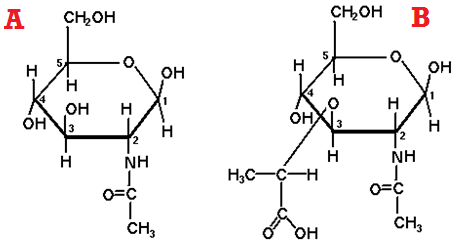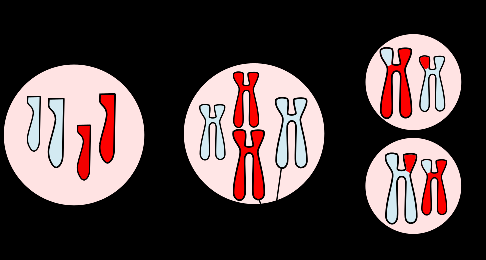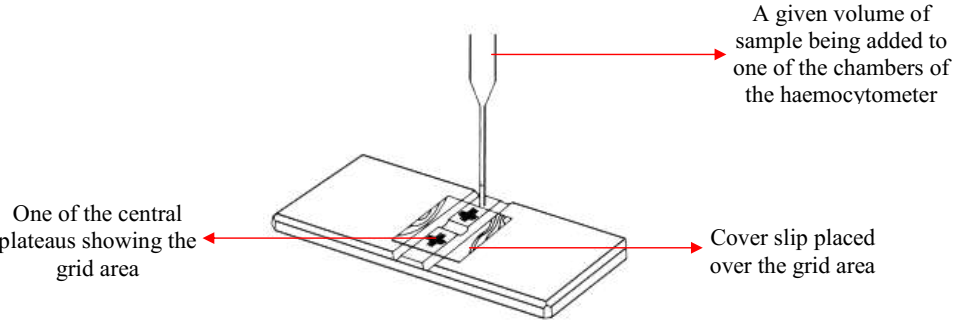Eukaryotic cells are organisms or cells that have a membrane-bound nucleus. They are distinct group of organisms that have a unit membrane-enclosed nucleus and other organelles such as the mitochondria that are membrane-bound . They are different from prokaryotic cells which lack membrane-bound nucleus. The term eukaryote is derived from the Greek word eu which means ‘true’ and kary which means nucleus. In other words, eukaryotes are cells or organisms that have true nucleus. All eukaryotic cells have their genetic material or DNA enclosed in the nucleus (a membrane-bound organelle). They include cells from fungi, protozoa, algae, plants and animals.
Eukaryotic cells have organelles with separate cellular and metabolic functions unlike the prokaryotes. Structurally, eukaryotes are more complex and organized than prokaryotic cells. All known living organisms that exclude bacteria and Archaea are known to be eukaryotes. Some of the organelles found in eukaryotic cells include chloroplast (found only in photosynthetic cells), mitochondria, cell wall (which contains chitin or cellulose when present), ribosomes (80S ribosomes) and cytoplasm amongst others.
There are other groups of microorganisms which are neither eukaryotes nor prokaryotes. These microbes which are not prokaryotic cells or eukaryotic cells are known as viruses. It is noteworthy that viruses, a group of microorganisms are neither eukaryotes nor prokaryotes. The reason for this is because viruses are not cells because they lack certain attributes of a cell (e.g. the ability to self-replicate). Viruses only exhibit the attributes of a cell when it infects a living cell, and they are known to infect all cells including other microorganisms. Eukaryotic cells have membrane-bound nucleus (Figure 1).

They are much smaller in size than the eukaryotic and prokaryotic cells. Outside a living cell, viruses are static and incapable in carrying out any form of metabolic activity. They only become active and replicate when they infect living cells whose biosynthetic machinery is used to drive their own. Thus, viruses are generally referred to as ‘obligate intracellular parasites’ because they can only replicate inside the cells of other living organisms that they infect.
Table 1 enumerates some of the basic differences between eukaryotic and prokaryotic cells.
Table 1. DIFFERENCES BETWEEN PROKARYOTIC AND EUKARYOTIC CELLS
| PROKARYOTES | EUKARYOTES | |
| 1. | Nuclear membrane is absent. | Nuclear membrane is present. |
| 2. | Chromosome structure is in direct contact with the cytoplasm. | Chromosome structure is not in direct contact with the cytoplasm but in a nuclear membrane bound organelle called nucleus. |
| 3. | Cell division does not involve mitosis and meiosis. | Cell division involves mitosis and meiosis. |
| 4. | Cell wall when present contains only peptidoglycan. | Cell wall when present contains chitin and cellulose but not peptidoglycan. |
| 5. | Mitochondria are absent. | Mitochondria are generally present. |
| 6. | Flagella when present have a simple structure. | Flagella when present have a complex structure. |
| 7. | Chloroplasts are absent. | Chloroplasts are present but only in photosynthetic cells. |
| 8. | Golgi bodies/apparatus and endoplasmic reticulum are absent. | Golgi bodies/apparatus and endoplasmic reticulum are present. |
| 9. | Respiration is carried out through the cytoplasmic membrane. | Respiration is carried out through mitochondria. |
| 10. | The chromosomes of prokaryotic cells are often haploid (i.e. contains single-strands of DNA). | The chromosomes of eukaryotic cells are diploid (i.e. it contains two or more strands of DNA). |
| 11. | Carries out only asexual reproduction. | Carries out both sexual and asexual reproduction. |
References
Alberts B, Bray D, Lewis J, Raff M, Roberts K and Watson J.D (2002). The molecular Biology of the Cell. Fourth edition. New York, Garland, USA.
Berg JM, Tymoczko JL, Stryer L (2002). Biochemistry (5th ed.). New York, NY: W. H. Freeman.
Brooks G.F., Butel J.S and Morse S.A (2004). Medical Microbiology, 23rd edition. McGraw Hill Publishers. USA.
Campbell, Neil A.; Brad Williamson; Robin J. Heyden (2006). Biology: Exploring Life. Boston, Massachusetts: Pearson Prentice Hall.
Cooper G.M and Hausman R.E (2004). The cell: A Molecular Approach. Third edition. ASM Press.
Dale J (2003). Molecular genetics of bacteria. Jeremy W. Dale and Simon Park (4th eds.). John Wiley & Sons Ltd, West Sussex, UK. Pp.
Karp, Gerald (2009). Cell and Molecular Biology: Concepts and Experiments. John Wiley & Sons.
Lodish H, Berk A, Matsudaira P, Kaiser C.A, Kreiger M, Scott M.P, Zipursky S.L and Darnell J (2004). Molecular Cell Biology. Fifth edition. Scientific American Books, Freeman, New York, USA.
Madigan M.T., Martinko J.M., Dunlap P.V and Clark D.P (2009). Brock Biology of microorganisms. 12th edition. Pearson Benjamin Cummings Publishers. USA. Pp.795-796.
Maton, Anthea (1997). Cells Building Blocks of Life. New Jersey: Prentice Hall.
Discover more from Microbiology Class
Subscribe to get the latest posts sent to your email.




